The Nation's Game - life at the bottom of the pyramid: Part 1, the grassroots question
Across a seven-part series, The Independent will be exploring the deeply misunderstood and complex world of grassroots football
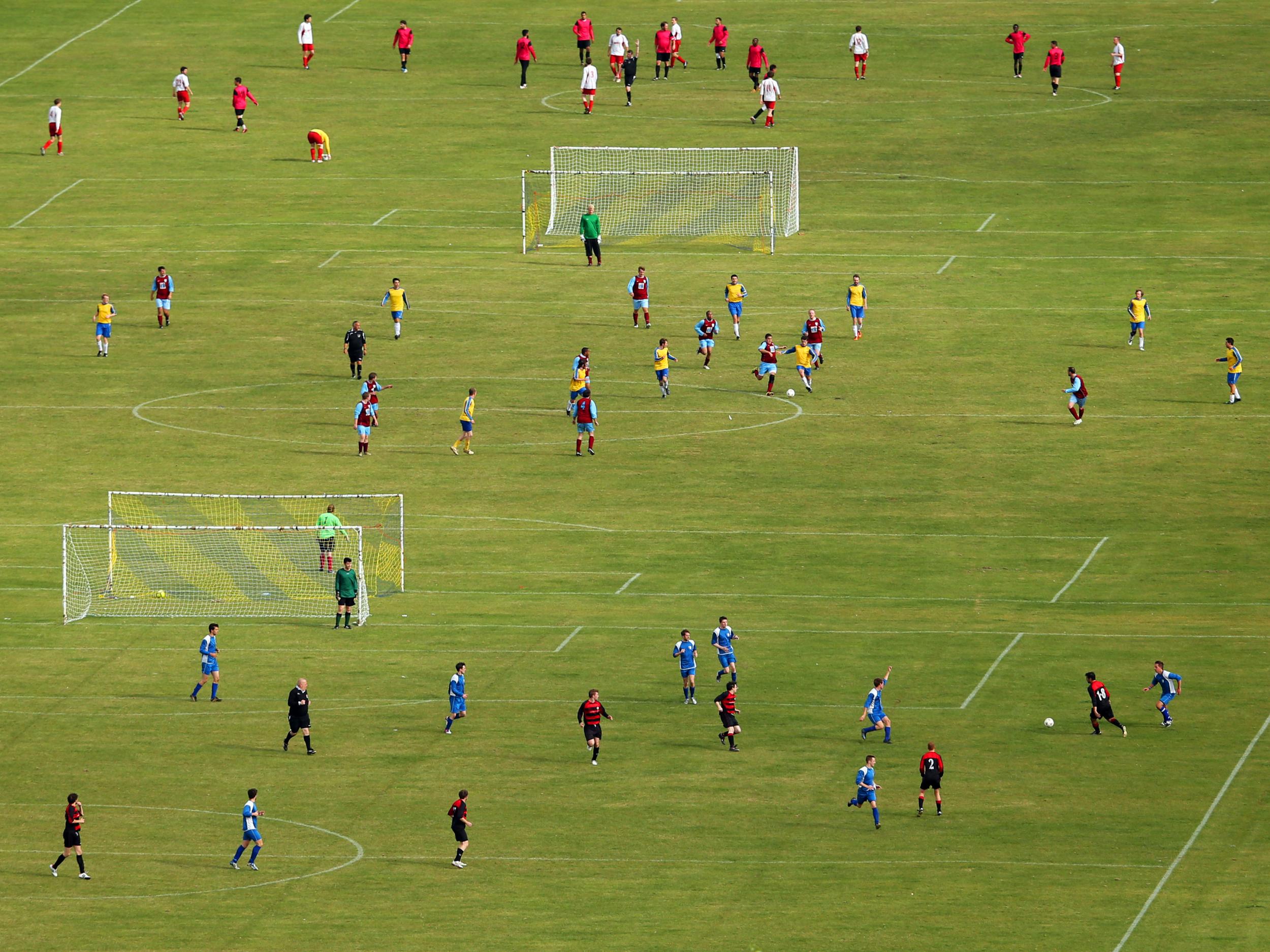
Every football fan knows the scene. It's a Sunday morning. There’s a fine coat of frost on the pitch, a biting chill in the air and a dusty Winter sun overhead. Parents are busy at work assembling the goals, fingers stiff and cold, while coach puts the boys through their paces ahead of kick-off. First, shuttle runs. The players jog back and forth, gasping for air, as the hard surface beneath starts to soften. A couple are lagging at the back. Coach cracks the whip and barks some motivation. The stragglers soon fall in line.
There’s no room for flippancy. Not today. This is the big one. Top versus second. The season is coming to a close and victory this morning could determine the title. Next, a group stretch led by the captain. Tactics are discussed, muscles tended to, words of encouragement shared. Hats, gloves and tops are finally discarded. They’re ready.
Kick-off. A riot of noise and motion explodes, with mates, mums and neutrals alike willing the two teams on. Twenty minutes pass with little note, and then, out of nothing, the game bursts into life. A goal. An equaliser minutes later. Half-time. Restart. 40 minutes of tense, tight football. A late controversial penalty. A last-minute winner. Ecstasy. Agony. Cool-down. The drive home. A warm shower. Bacon cob. Feet up.
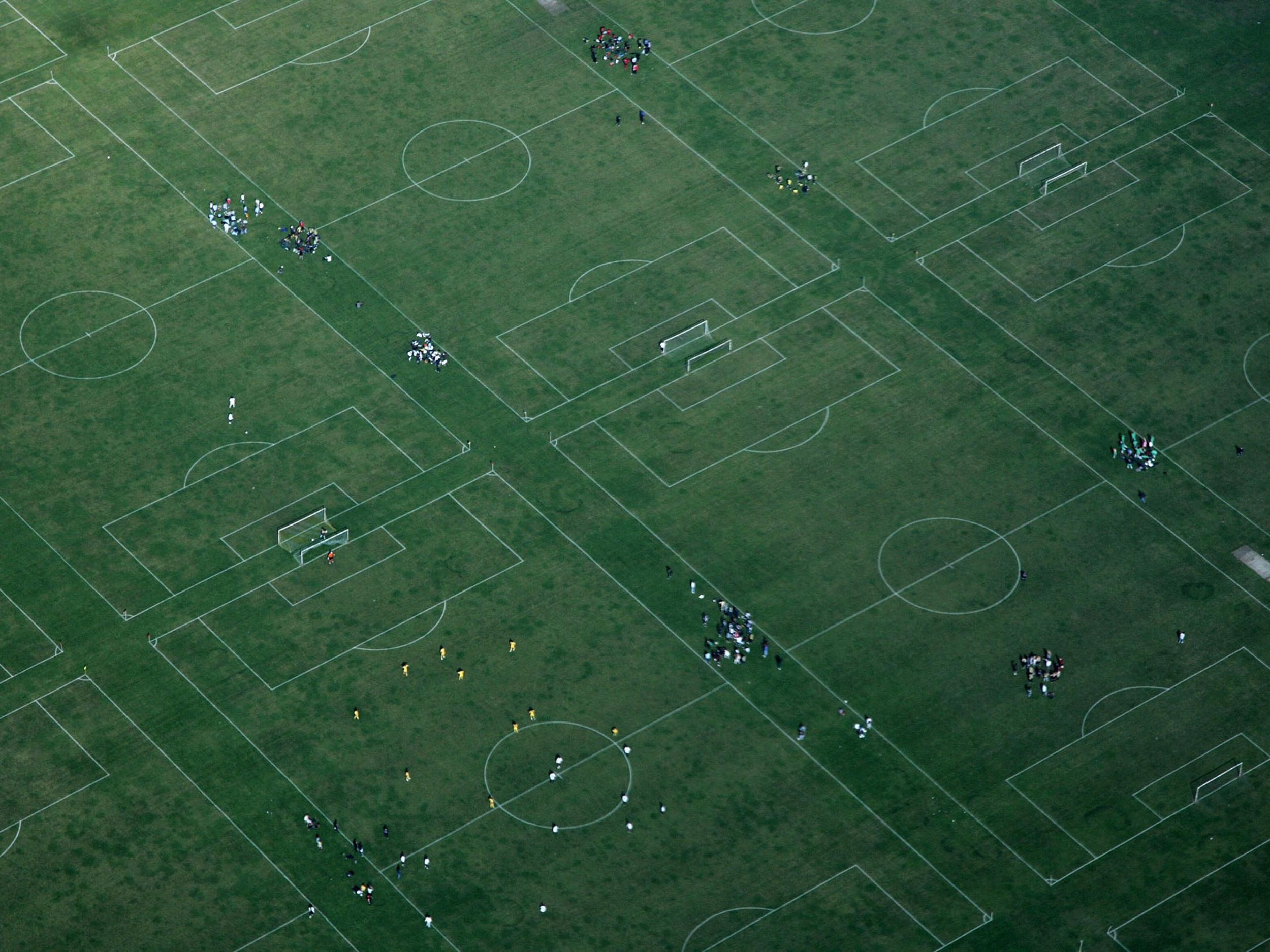
It’s a scene from the world of grassroots football so many of us are familiar with, but it’s also one that is fading from vision with each passing year. Local parks that used to be full to the brim with players, coaches and fans are now empty or sparsely populated at the weekend; leagues have shrunk in size across the country; and the traditional grassroots community has found itself sidelined by the cult of Premier League which has increasingly come to dominate the footballing conversation within our country.
Still, this isn’t to assume that grassroots football has suffered an arresting decline in quality. The older generation talk of the ‘good old days’ but views such as these are muddled by rose-tinted nostalgia. Football ‘back then’ was played on boggy mud baths, players got changed in the back of cars and health and safety was non-existent. It was hardly a golden era for English grassroots. But the spirit of the game was clear as daylight. Pub teams, work teams, teams comprised of players from a single inner-city street, junior teams made up of the lads from the local high school - football was finely woven into the very fabric of community life.
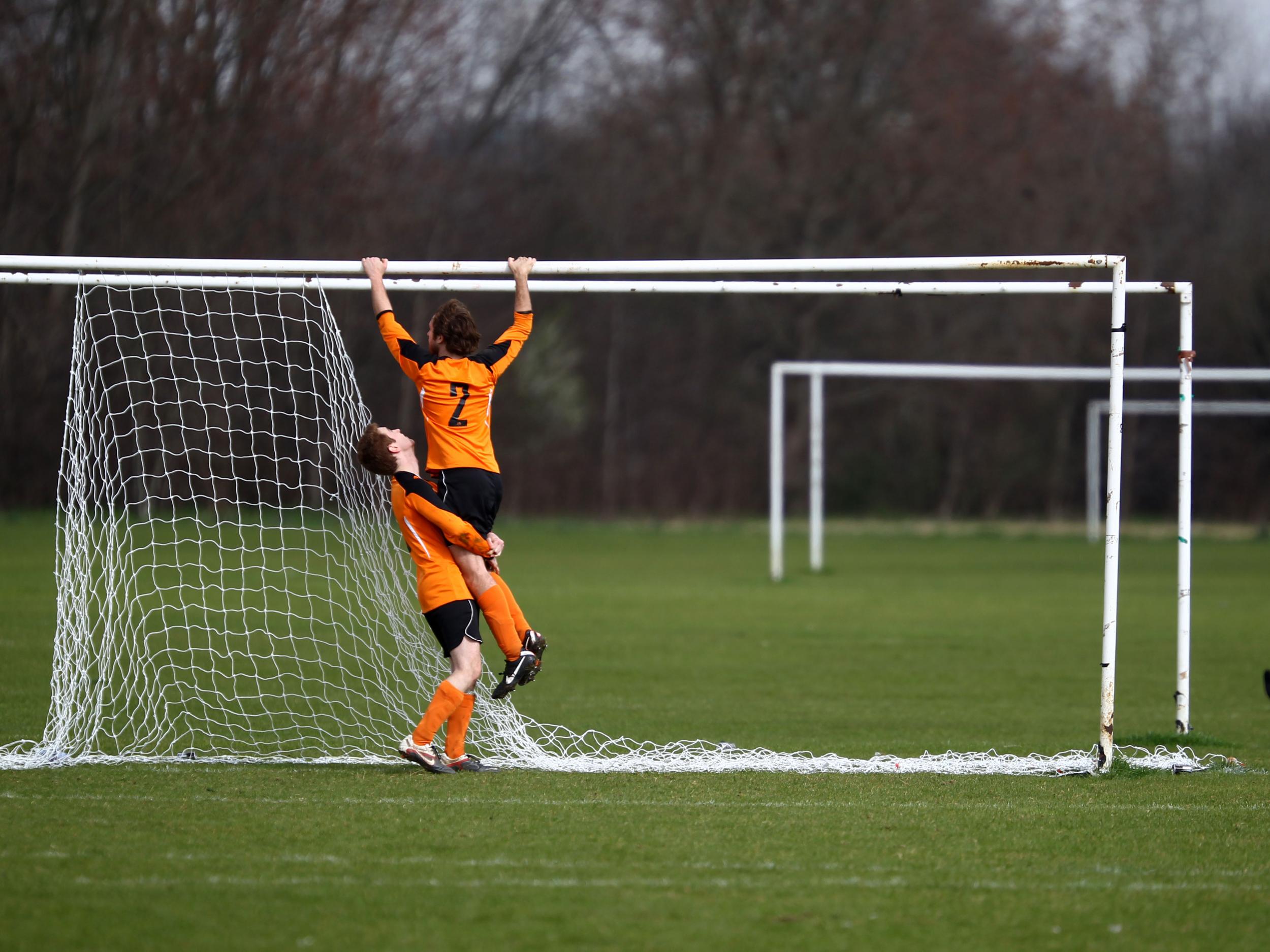
This is no longer the case. For many, football has changed beyond recognition. With the Premier League setting the agenda, the sport has become increasingly detached from its organic roots. Instead, football is now dominated by multi-million transfers, ‘top-six’ clashes and the streamlined narratives that surround the sport’s most extroverted personalities - so much so that the actual 90 minutes has seemingly taken a backseat. Under this context, the argument goes, the game has become commodified and conveniently packaged for the sake of selling it on the global stage.
“Think, for example, of the way in which Sky will (over)-hype games between Liverpool and Manchester United, when United play City, the North London derby, and so on,” Dr David Webber, a lecturer in Football Studies at Southampton Solent University, tells The Independent.
"Historically, these rivalries were based upon geographic proximity. However, the globalisation of the Premier League and the pursuit of Champions League football (and the money, rather than simply the glamour of the competition is the key attraction here) has changed all this. These are no longer simply local contests about bragging rights and local pride but staging posts in the pursuit of the cash available at Europe’s top table.”
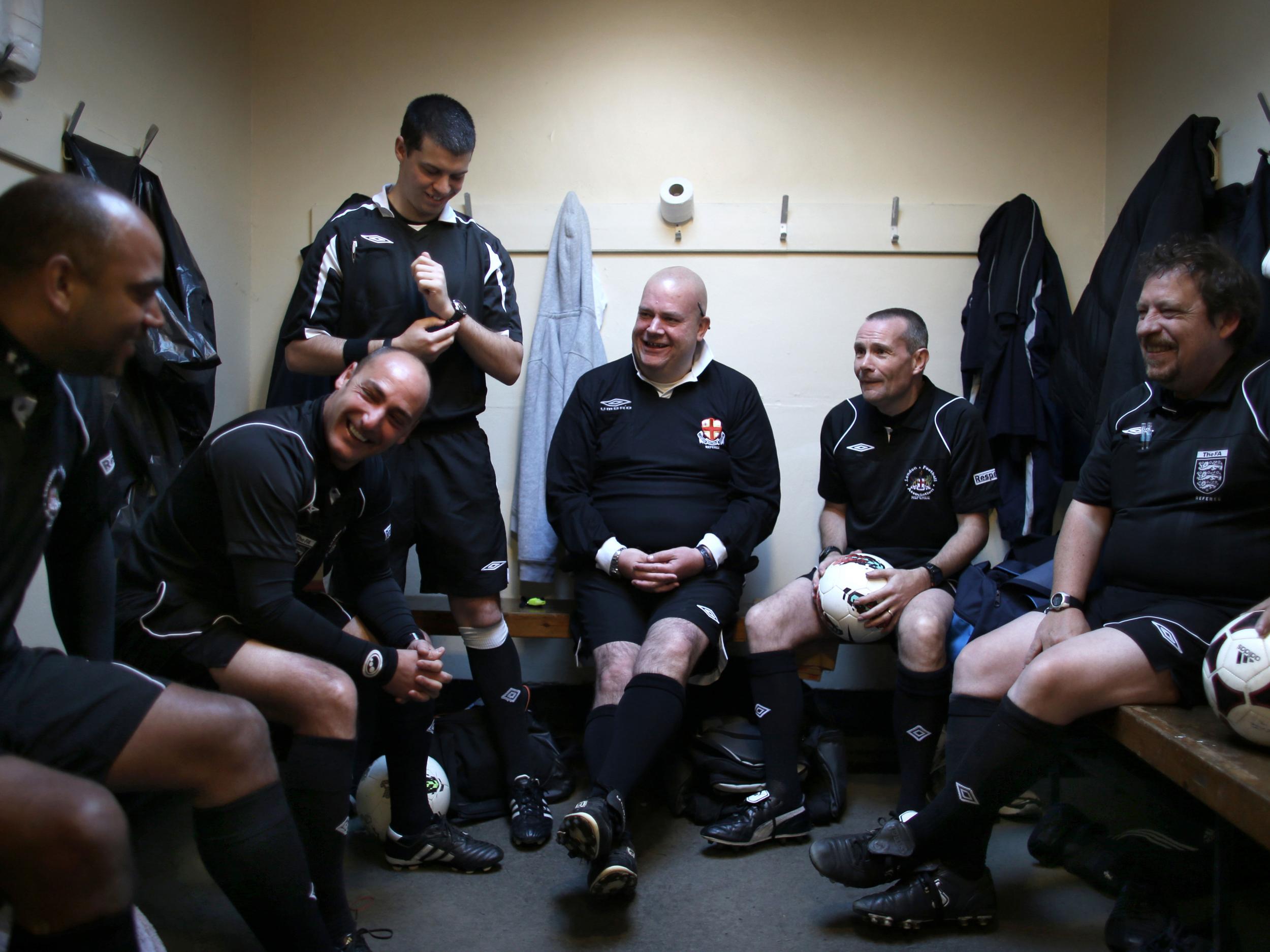
The effect of this? “The emphasis is too heavily skewed towards the ‘spectacle’ and ‘entertainment’ of the Premier League - and not enough is being done by the League, its clubs or the Football Association to address the chronically low levels of participation that now exist in the English game,” Dr Webber adds. “There is no ‘trickle-down effect’; the wealth in the game circulates amongst a handful of super-rich clubs within the top echelons of the Premier League. Hundreds of clubs, and thousands of young players in particular, much further down football’s ladder are sadly losing out as a result.
“There is a huge inequality within English football. While England’s biggest clubs have grown exponentially richer, investment in the grassroots game continues to lag behind.”
This cynicism is shared among figures at the very top of the game. In a recent interview, Burnley manager Sean Dyche pointedly discussed football’s new “glossy, formatted” feeling. “There’s so much around the game now,” he said. “It’s like a strange kind of . . . sport-panto. There’s the ‘show’ aspect of football and then there’s the reality. Because it’s not a show — it’s a sport and a business — but what is around it is like a show. The bit on the pitch is the reality-bound part. It has all got a bit . . . glossy, a bit formatted, a bit smooth.
“It’s a sport that is to be enjoyed not just for the glossiness, but for teamship, for people giving everything to the cause, for feeling part of something, for being part of a tribe of people who care about one situation. The game has got to be careful that it doesn’t go so glossy and beautiful and manufactured that it loses that connection.”
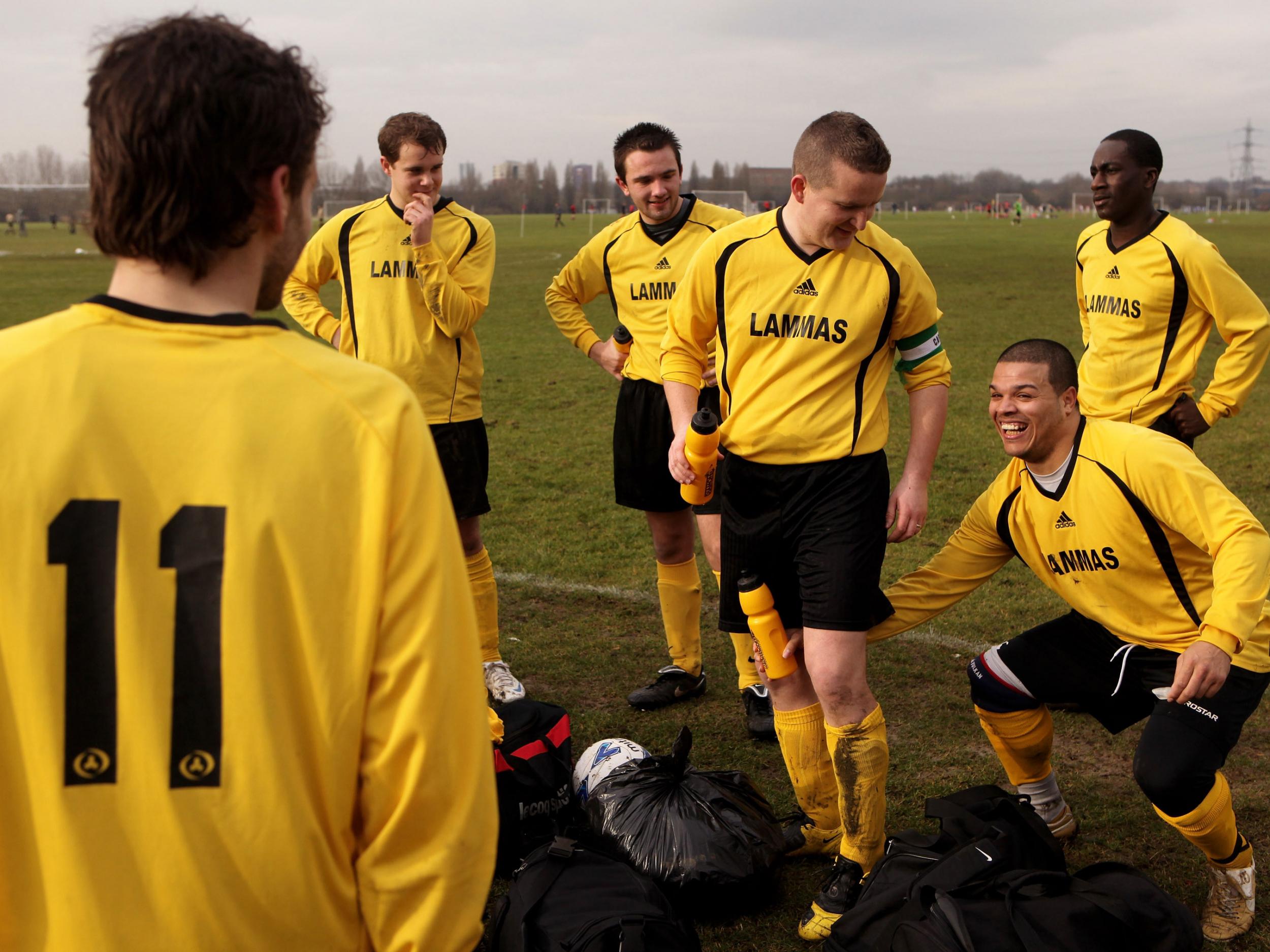
So how has this general sea-change, across all areas of the sport, changed life at the bottom of the pyramid? Against the hegemony of the Premier League and this new order, has the grassroots game really been neglected, swept under the carpet and consigned to the history books?
In the eyes of many, the answer to that is simple: yes. It was only last month that the FA found itself in an embarrassing trademark dispute with non-league side Wembley FC. The FA had complained that the club’s badge would be confused with Wembley Stadium overseas and said it was "forced to find a way to prevent" Wembley FC's trademark "blocking" theirs abroad. Although the FA insisted the dispute never concerned Wembley FC’s logo - and stressed that they would not ask the non-league club to pay any potential costs - it’s incidents such as these which reinforce the perception of the organisation being out of touch with the grassroots community.
But, in reality, the fact of the matter is much more complicated and cannot be understood in plain binary terms. Grassroots football is a deeply complex social organism, with numerous forces pushing and pulling it in often opposite directions. One initiative that will come to significantly improve the fortunes of a certain demographic may simultaneously hinder the opportunities on offer to another set of individuals. And without the right strategy and direction, the money pumped into the game can be easily wasted.
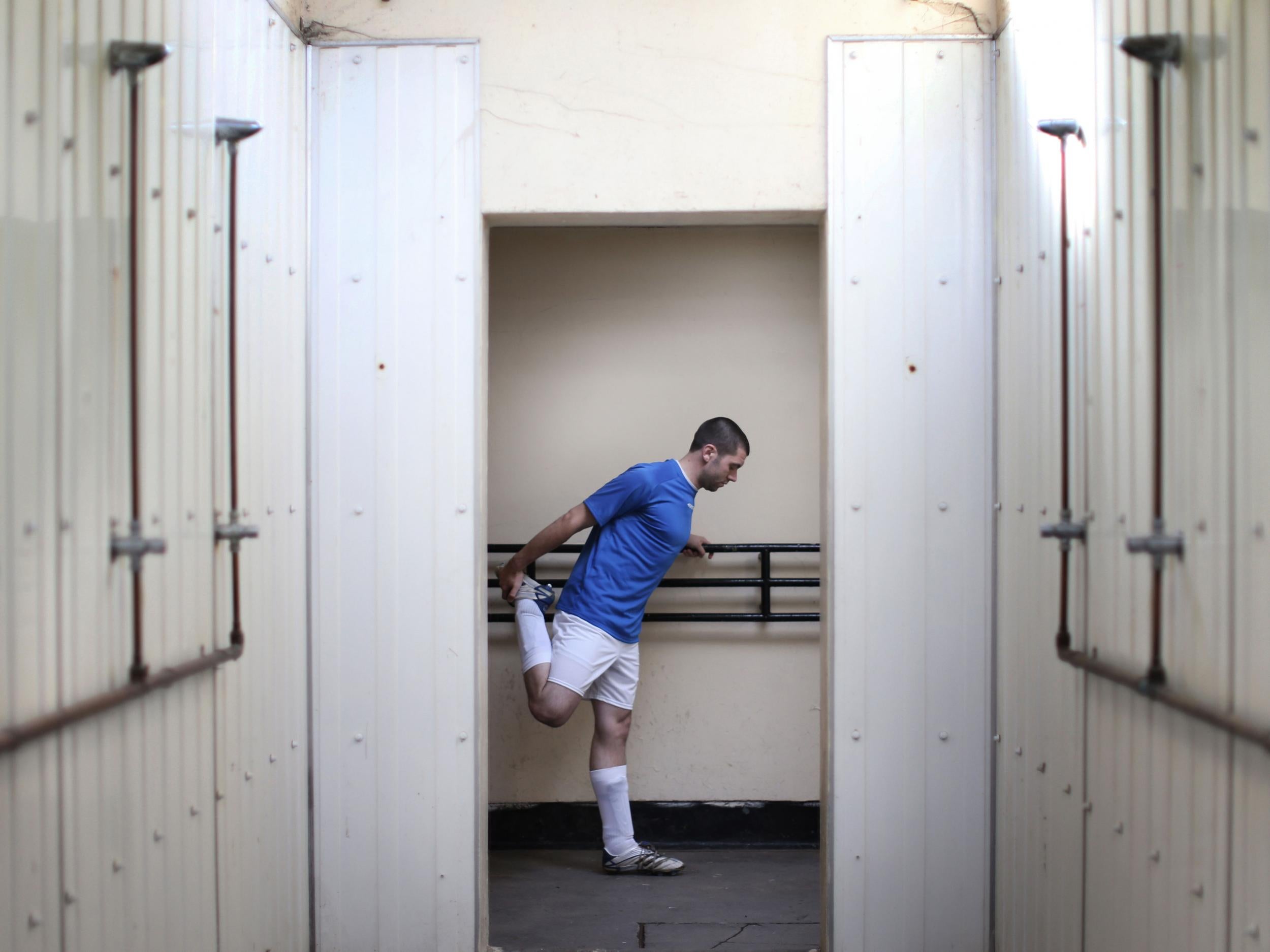
The game must also be understood within the wider context of the economy. Against the backdrop of austerity, and under a government where sport is not a codified statutory service, grassroots football is continuing to fight what, for many, seems to be a losing battle. The obstacles in place against the sport far outweigh those facilitating factors which look to enhance it. But while the traditional aspects of football have certainly floundered in recent years, in its place different, modern-looking versions have flourished. From five-a-side to futsal, football has metamorphosed to keep abreast with the demands of modern life, thus highlighting its remarkable adaptability. In lamenting the decline of traditional grassroots football we cannot afford to ignore those aspects of the game which are thriving, as well as the role the FA, the Premier League and the Football Foundation has played in helping promote this growth.
Across this seven-part series, The Independent will be exploring the deeply misunderstood and complex world of grassroots football. From the elite power-makers of the Premier League and FA to those clubs that have nurtured some of country’s biggest talents, from local government councils to the ever-growing women’s game, we’ll be delving beneath the surface to take a closer look at the state of the nation’s game.
Part 2 of 'The Nation's Game' series is now available - read it here.
Subscribe to Independent Premium to bookmark this article
Want to bookmark your favourite articles and stories to read or reference later? Start your Independent Premium subscription today.

Join our commenting forum
Join thought-provoking conversations, follow other Independent readers and see their replies
Comments